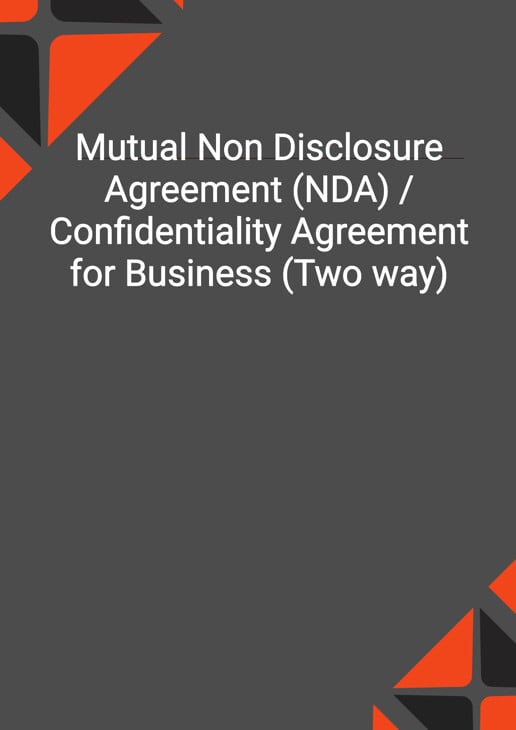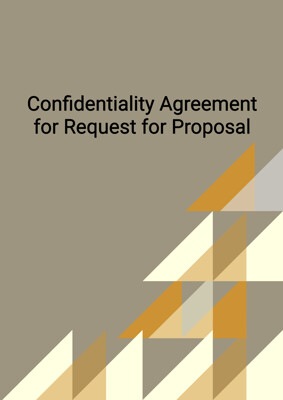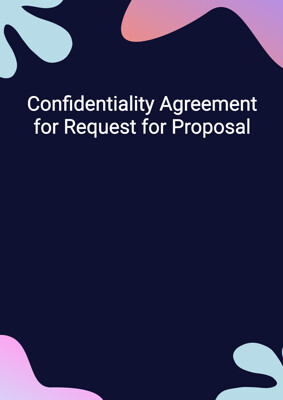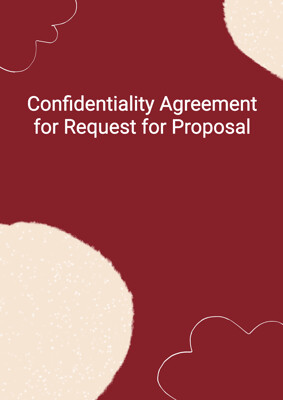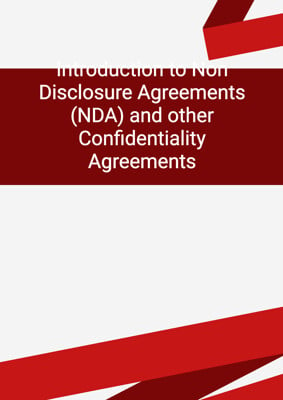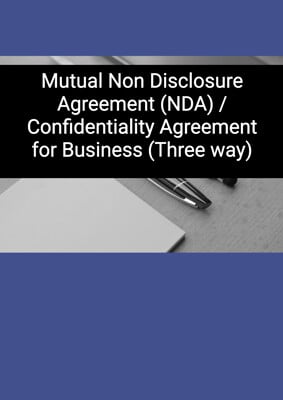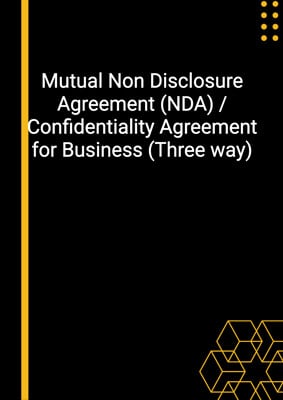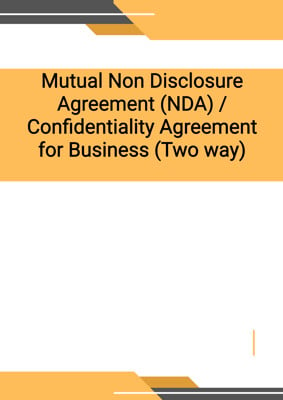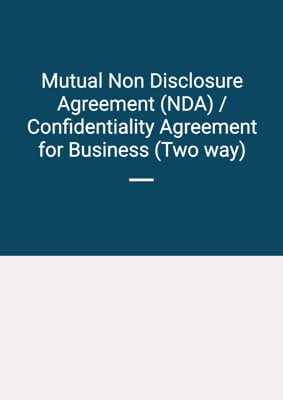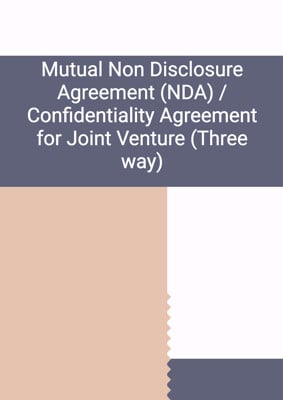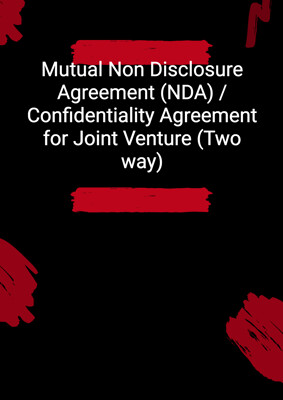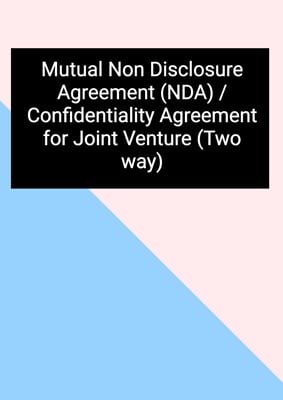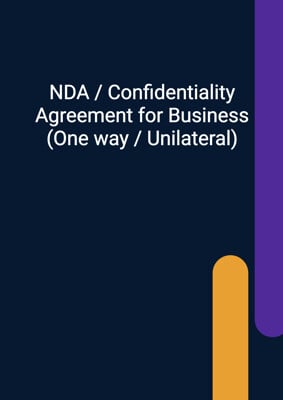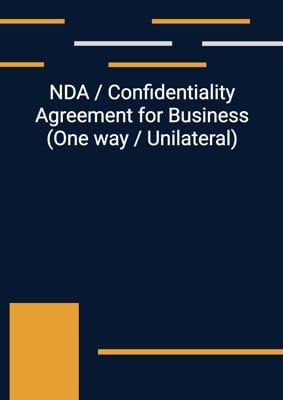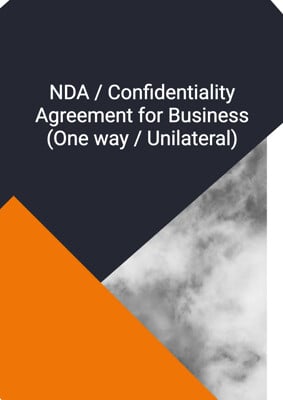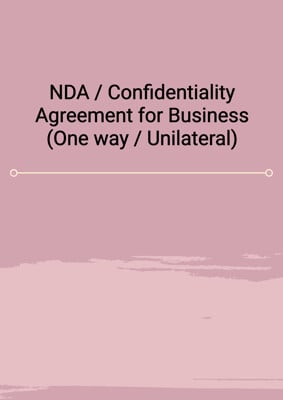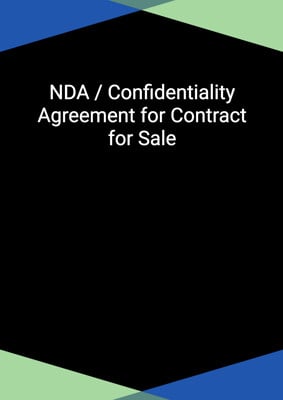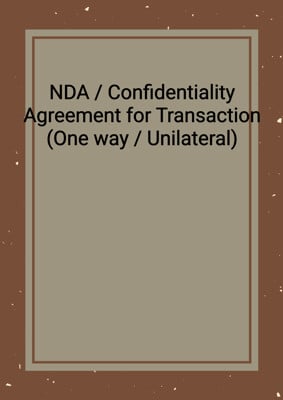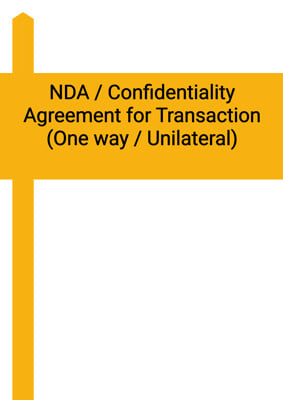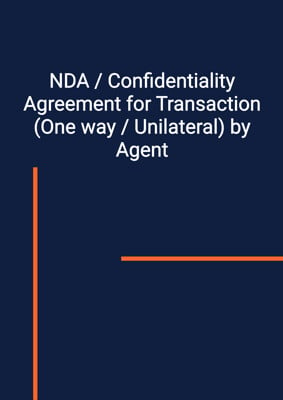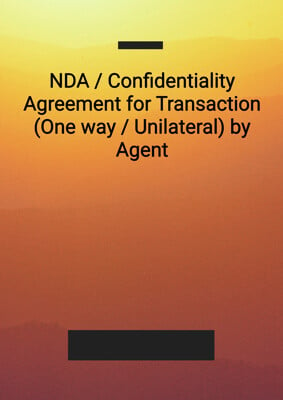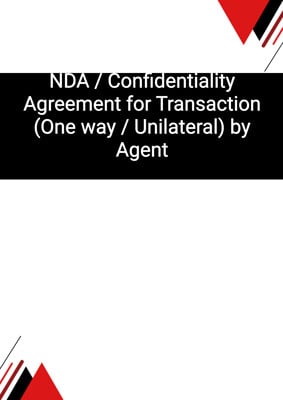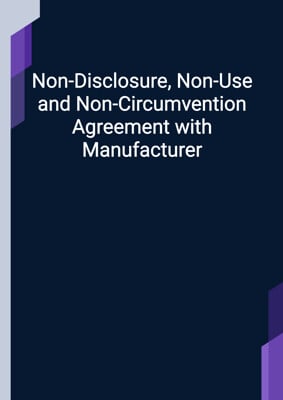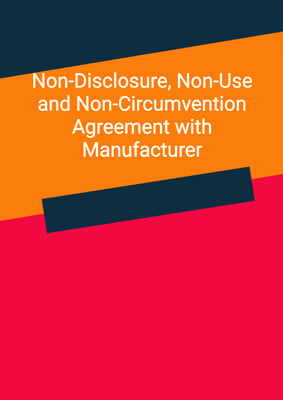How to Tailor the Document for Your Need?
01
Create Document
Fill in the details of the parties. You can click the "Fill with Member’s Information" button to complete it with information saved to your account.
02
Fill Information
Please fill in any additional information by following the step-by-step guide on the left hand side of the preview document and click the "Next" button.
03
Get Document
When you are done, click the "Get Document" button and you can download the document in Word or PDF format.
04
Review Document
Please get all parties to review the document carefully and make any final modifications to ensure that the details are correct before signing the document.
Document Preview
Document Description
The Mutual Non-Disclosure Agreement (NDA) / Confidentiality Agreement for Business (Two-way) is a legal document that establishes a confidential relationship between two parties. The agreement aims to protect the confidential information of both parties.
The first section is the interpretation section, which defines key terms used throughout the agreement. This section ensures that both parties have a clear understanding of the terms used in the document.
The second section outlines the obligations of confidentiality. It states that each party must maintain the confidentiality of the information, which only can be used for the purpose stated in the agreement. This section also prohibits any copying or storage of the information in an externally accessible computer or electronic information retrieval system.
The third section focuses on the confidentiality measures that each party must take to protect the disclosed information. It states that the receiving party must not disclose the information to anyone unless necessary. Adequate security measures preventing unauthorized access or copying of the information must also be applied.
The fourth section denotes the exceptions to the confidentiality obligations, which do not apply to information that is already available to the public, known to the receiving party, disclosed by a third party, or independently developed by the receiving party.
The fifth section addresses the return of information. It states that each party must, upon request, return or destroy all materials containing the information and remove any stored information from computer systems.
The sixth section includes a disclaimer and warranty, indicating that the information provided may not be complete or fully accurate. It also states that neither party will have any liability for using the information by the other party.
The seventh section addresses the confidentiality of the agreement itself. It states that the existence and nature of the agreement must be kept confidential, and any announcement or circular regarding the agreement requires consent from both parties.
The eighth section outlines the remedies available in case of a breach of the agreement. It states that the disclosing party is entitled to remedies such as injunction and specific performance.
The ninth section addresses waiver. It states that a waiver of a failure to perform any provision of the agreement does not constitute a waiver of any other or further failure.
The tenth section prohibits the assignment of rights or obligations under the agreement.
The eleventh section confirms that the agreement constitutes the complete agreement between the parties and overrides any previous agreements or understandings.
The twelfth section clarifies that no license is granted under any intellectual property rights of either party.
The thirteenth section denotes the governing law and jurisdiction.
The fourteenth section addresses notices and service. It denotes the methods of delivering notices and the addresses of the parties for the purpose of the agreement.
The fifteenth and final section of the document states that a third party cannot enforce the rights of the agreement.
In summary, the Mutual Non Disclosure Agreement (NDA) / Confidentiality Agreement for Business (Two way) is a comprehensive document that establishes a confidential relationship between two parties and outlines their obligations regarding the protection of confidential information.
How to use this document?
To use the Mutual Non Disclosure Agreement (NDA) / Confidentiality Agreement for Business (Two way), follow these steps:
1. Review the agreement: Familiarize yourself with the entire agreement to understand its purpose and obligations.
2. Identify the parties: Enter the names and principal places of business of Party 1 and Party 2 in the agreement.
3. Define the information: Determine the confidential information that will be exchanged between the parties and specify it in the agreement.
4. Maintain confidentiality: Both parties must commit to maintaining the confidentiality of the information and using it exclusively for the purpose stated in the agreement.
5. Limit disclosure: Only disclose the information to approved representatives who require access for the purpose and are bound by confidentiality obligations.
6. Separate and secure information: Keep the information separate from other documents and apply adequate security measures to protect it from unauthorized disclosure, copying, or use.
7. Recordkeeping: Keep a written record of all information received, including any copies made.
8. Return or destroy information: Upon request, return or destroy all documents and materials containing the information, and remove any stored information from computer systems.
9. Maintain confidentiality after completion: Both parties remain bound by the confidentiality obligations even after the purpose of the agreement is completed.
10. Understand disclaimers and warranties: Recognize that the information exchanged is not guaranteed to be accurate, and neither party will be liable for its use by the other party.
11. Keep the agreement confidential: Both parties agree to keep the existence and nature of the agreement confidential and obtain approval for any announcements or circulars related to the agreement.
12. Seek legal remedies for breaches: In case of a breach, the disclosing party can seek remedies such as injunction, specific performance, or other equitable relief.
13. Follow notice and service requirements: Serve notices by hand, email, or post in accordance with the specified timelines.
14. Do not assign rights or obligations: Neither party can assign any rights or obligations under the agreement without consent.
15. Understand the entire agreement: The agreement constitutes the entire understanding between the parties and supersedes any prior representations or warranties.
Please note that this guidance is a summary and does not constitute legal advice. It is recommended to consult with a legal professional to ensure compliance with applicable laws and regulations.
Not the right document?
Don’t worry, we have thousands of documents for you to choose from:
